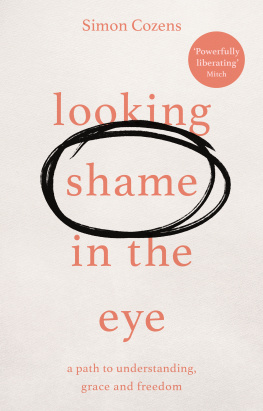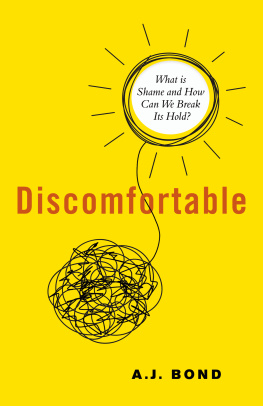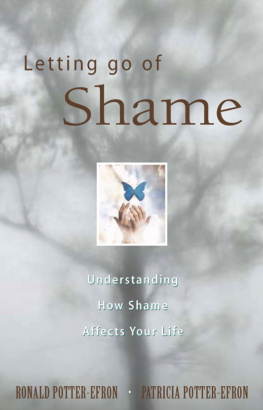Andrew P. Morrison - The Culture of Shame
Here you can read online Andrew P. Morrison - The Culture of Shame full text of the book (entire story) in english for free. Download pdf and epub, get meaning, cover and reviews about this ebook. year: 1998, publisher: Jason Aronson, genre: Romance novel. Description of the work, (preface) as well as reviews are available. Best literature library LitArk.com created for fans of good reading and offers a wide selection of genres:
Romance novel
Science fiction
Adventure
Detective
Science
History
Home and family
Prose
Art
Politics
Computer
Non-fiction
Religion
Business
Children
Humor
Choose a favorite category and find really read worthwhile books. Enjoy immersion in the world of imagination, feel the emotions of the characters or learn something new for yourself, make an fascinating discovery.

- Book:The Culture of Shame
- Author:
- Publisher:Jason Aronson
- Genre:
- Year:1998
- Rating:4 / 5
- Favourites:Add to favourites
- Your mark:
- 80
- 1
- 2
- 3
- 4
- 5
The Culture of Shame: summary, description and annotation
We offer to read an annotation, description, summary or preface (depends on what the author of the book "The Culture of Shame" wrote himself). If you haven't found the necessary information about the book — write in the comments, we will try to find it.
The Culture of Shame — read online for free the complete book (whole text) full work
Below is the text of the book, divided by pages. System saving the place of the last page read, allows you to conveniently read the book "The Culture of Shame" online for free, without having to search again every time where you left off. Put a bookmark, and you can go to the page where you finished reading at any time.
Font size:
Interval:
Bookmark:
THE CULTURE OF SHAME
THE
CULTURE
OF
SHAME

ANDREW P. MORRISON, M.D.

Grateful acknowledgment is made to the following for permission to reprint previously published material:
International Creative Management, Inc.: Excerpt from The Bluest Eye by Toni Morrison. Copyright 1970 by Toni Morrison. Reprinted by permission of International Creative Management, Inc.
The New York Times: Excerpt from Long Live Shame! by E. Hoffer. Copyright 1974 by The New York Times Company. Reprinted by permission.
Note: The cases in this book are based on those I have encountered in my psychiatric practice, but names and identifying characteristics of persons involved have been altered to protect their personal privacy. Any resemblance to the names and characteristics of persons living or dead is therefore purely coincidental.
First softcover edition 1998
Copyright 1998, 1996 by Andrew P. Morrison, M.D.
Reprinted by arrangement with The Ballantine Publishing Group, a division of Random House, Inc. First hardcover edition: 1996.
All rights reserved. No part of this book may be used or reproduced in any manner whatsoever without written permission from Jason Aronson Inc. except in the case of brief quotations in reviews for inclusion in a magazine, newspaper, or broadcast.
Library of Congress Cataloging-in-Publication Data
Morrison, Andrew P., 1937
The culture of shame / Andrew P. Morrison. 1st softcover ed.
p. cm.
Includes bibliographical references and index.
ISBN 978-0-7657-0174-9
1. Shame. 2. Guilt. I. Title.
BF575.S45M67 1998
152.4dc21
9816681
Printed in the United States of America on acid-free paper. For information and catalog write to Jason Aronson Inc., 230 Livingston Street, Northvale, New Jersey 076471726. Or visit our website: http://www.aronson.com
To
Rachel and Marcy
Preface
I decided to write this book in order to share with a wider readership the experience of understanding and dealing with shame, which I have previously limited to professional writings, discussions with colleagues, and my own personal musings. I have come to recognize the centrality of shame issues in my work with patients and in my efforts to understand my own feelingsearly ones, relating to my family, and more recent ones in the daily aspects of my current life. Communicating the relevance of shame to my professional associates was initially an uphill battle, but, as narcissism has become a focus of interest in recent decades, shame progressively is recognized among those important feelings in peoples experience.
Much of human misery stems, I believe, from the gap between what we wish to be (or think we should be) and what we believe that we are. This gapinfluenced by the largesse of our aspirations on the one hand, and the lowliness of our own self-image on the otheris the breeding-ground for shame. The nature of this gap, between our ideals and our convictions about ourselves, is both universal and individualized, often leading to feelings of embarrassment, self-loathing, and humiliation. In the chapters that follow, I will try to describe these feelings, give them names to help us identify and articulate them, talk about how they come to be, and, finally, make suggestions about what to do to alleviate them.
As various chapters of the manuscript took shape, I wrestled with potential book titles. I wanted to convey the weight, the sense of burden, that accompanies shame. This burden is both deeply personal and, at the same time, rooted in the social surround. It is this social aspect of shame that leads to the wish to hide, to conceal those weaknesses and defects that generate shames pain. At the same time, we attempt to hide those weaknesses from ourselves as well, for shame is, at its core, about self-experience. Despite its cultural sources, shames burden can be eased through personal effort and alleviated in that special relationship provided by psychotherapy. The present title represents an attempt to communicate some of these attributesthat shame devastates, but can be healed; that shame has roots that run deep and are concealed; that shame is about both our culture and ourselves. I hope that The Culture of Shame indicates these elements and at the same time suggests room for potential modification of those societal conditions that generate shame.
It is from my patients that I have learned the most about shame, and I want to express my deepest thanks and appreciation to them especially. Many of them have contributed to this book, some more directly in influencing the shape taken by some of the clinical vignettes, and others through ideas and insights that evolved from our work together. I have tried at all times to protect the confidentiality of the people I have worked with. In most of the clinical examples, I have combined characteristics from several individuals to form a composite; some events contain fictional elements. All names (except my own) are fictitious. Some of you may guess at your identity in various spots, and some may wonder whether you contributed pieces to the constructed individuals whom I offer along the way. At any rate, know that without that magical world of depth and emotion provided by the psychotherapeutic calling, I could never have immersed myself in that singular feelingshamewhich led to the writing of this book. Among many other reasons, this is one to elicit my deep gratitude to those who have enabled me to derive such satisfaction from my work.
Much of what I have learned about shame came from exploration of my own childhood and experience. In this quest I had the firmness, wisdom, and warmth of a very special guide, and I thank Frances Bonner for her patience and confidence in me. I learned of the inconsistent early relationships, the deep self-doubts, and the negative comparisons of self with others that lead to shame sensitivity. I learned especially of the tendency of shame to generate hiding and concealment, as I worked to root it out and to challenge the personal mandate to conceal and to keep myself hidden. I came to realize that the alternative to shame and hiding lay in attaining self-acceptance, as I worked at the varied ways of reaching that goal.
This emphasis on self-acceptance as a means of alleviating shame has informed one important element in the writing of this book. Many of the clinical examples, not disguised, though altered in some of their particulars, come from my own life and experience. Through the use of self-disclosure, I hope to demonstrate one of the principal methods in healing shame. In a sense, then, I use my own experiences in the hope that I can model a piece of the process in easing shame at the same time that I describe it. After all, whose experience can we ever know better than our own? Since it was my own feelings of shame that were such an important part of my early life, and since I advocate bringing these feelings out of hiding and looking at them against the illumination of light, I have chosen to describe some personal dramas as a means of both delineating shame and reworking some of my own experiences. I hope that these examples will be seen as only one part of this writers self-image, contributing to the fullness of a life that has become richer and more complex because of these investigations.
Before turning to the exploration of shame, I wish to thank specific individuals whose help and support have eased and facilitated the evolution of this book. Initially, Paul Stepansky, editor of The Analytic Press, shepherded the book proposal to his back-fence neighbor, who set the process in motion. Since my professional book on shame bears the TAP imprimatur and the wise assistance and advice of its editor-in-chief, I want to thank Paul for his help in both projects. Jolle Delbourgo, editor-in-chief of Ballantine, has been encouraging, direct, and graciously patient at various points in this project. Timothy Seldes has affirmed the significance of the book at each stage of its development and has been a sturdy advocate. Margaret Ryan found the right words and tone, and hung in through some difficult challenges. Though we havent as yet personally met, I express my long-distance thanks and respect. Once the manuscript got to Ballantine, Leigh Ann Sackrider gave it new contours and cheerfully answered my various inquiries.
Next pageFont size:
Interval:
Bookmark:
Similar books «The Culture of Shame»
Look at similar books to The Culture of Shame. We have selected literature similar in name and meaning in the hope of providing readers with more options to find new, interesting, not yet read works.
Discussion, reviews of the book The Culture of Shame and just readers' own opinions. Leave your comments, write what you think about the work, its meaning or the main characters. Specify what exactly you liked and what you didn't like, and why you think so.









